How to Make Your Best Steak Yet
In some English-speaking countries, when we get down to the fundamentals, we say we’re “getting to the meat and potatoes” of things. And while that phrase is somewhat ambiguous on which protein exactly is best for getting back to basics, one meat variety in particular stands out to us—steak.
Like eggs, steak is one of those universal ingredients that can be cooked, served, and incorporated an endless number of ways. It also has a reputation as an intimidating dish—one where “well done” is (we hope) hardly ever a complimentary description. But while a cook can spend a lifetime perfecting the art of cooking different steak cuts and styles, steaks are not nearly as difficult as they may seem to get right. Cooking the perfect steak also doesn't require a huge budget or a large amount of kitchen equipment; once you know what to shop for and how to prepare your steaks, it’ll be easy enough to make steak dinners a more frequent treat. To help you cook your best steak yet, we’ve put together a guide that takes you through the entire process, from choosing your cuts in the meat section to serving them up at home. Feel free to use this round-up as a starting point for making your perfect steak today, or to collect inspiration for your next cookout.
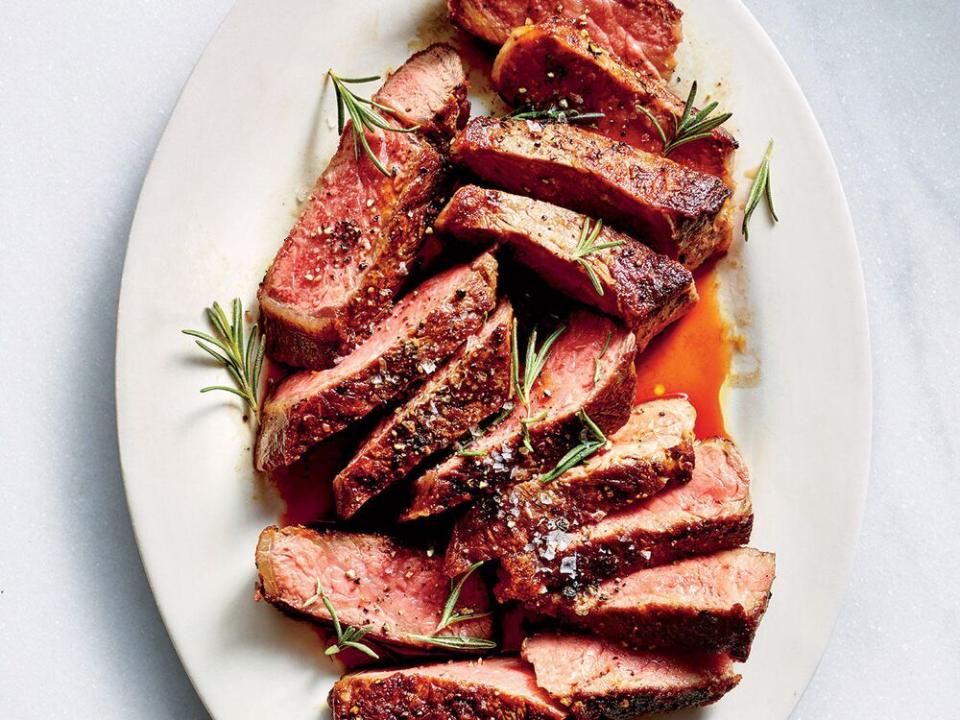
Step One: Pick Your Perfect Cut
Ultimately, the quality of your steak-cooking experience will rely on the choices you make when purchasing your future meal. That’s not to say, however, that your dreams of the perfect steak dinner are shattered if you can’t afford top-shelf wagyu. By learning about different meat cuts, a home cook can start the process of recognizing a great steak in the making, even if it’s on the clearance shelf.
First, set aside the idea that we’re talking about scouring the clearance section for New York strip or filet mignon. Sure, if you can find those cuts at a good quality and price, then snatch them up, but there’s literally more to a cow than the most commonly served steak varieties. Chuck steak, chuck-eye steak, and flat-iron steaks all taste great and can be found at cheaper prices than their premium cousins. If you can find them, hanger steaks are considered a best-kept budget secret among chefs, as they are both rich in flavor and melt-in-your-mouth tender. For a more complete list of which cuts provide a great meal at a reasonable price, check out our list of Cheap Beef Cuts So Good You’ll Swear Off Ribeye.
RELATED: How to Cook Chuck Steak
Knowing what part of the cow the cut comes from can also help you out when picking out a steak, and prevent you from making common mistakes based on misleading names. The general rule of thumb is that the more a muscle is used during an animal’s life, the tougher it will be (which explains why “tenderloin” and “shoulder tenderloin” are not at all the same thing). But if you don’t recognize the name of a cut off the top of your head, visually inspecting the meat will tell you a lot about its quality. Shoppers should look for steaks that are dark cherry red with distinct white fat marbling; vacuum sealed steaks should be a darker, purplish red.
The last, and potentially most important, consideration for shoppers is how they wish to use their steak. Will it be quickly cooked, or were you hoping for a steak stew? Steaks with less visible fat and marbling will do best when treated as entrees or when used in stir-frys, while steaks with a greater quantity of fat better lend themselves to stews and roasts. Leaner cuts may also have to be basted, marinated or braised, or may simply need additional fat (like butter) during the cooking process to stay tender and delicious. For more tips on how best to cook budget cuts of beef, read on here.
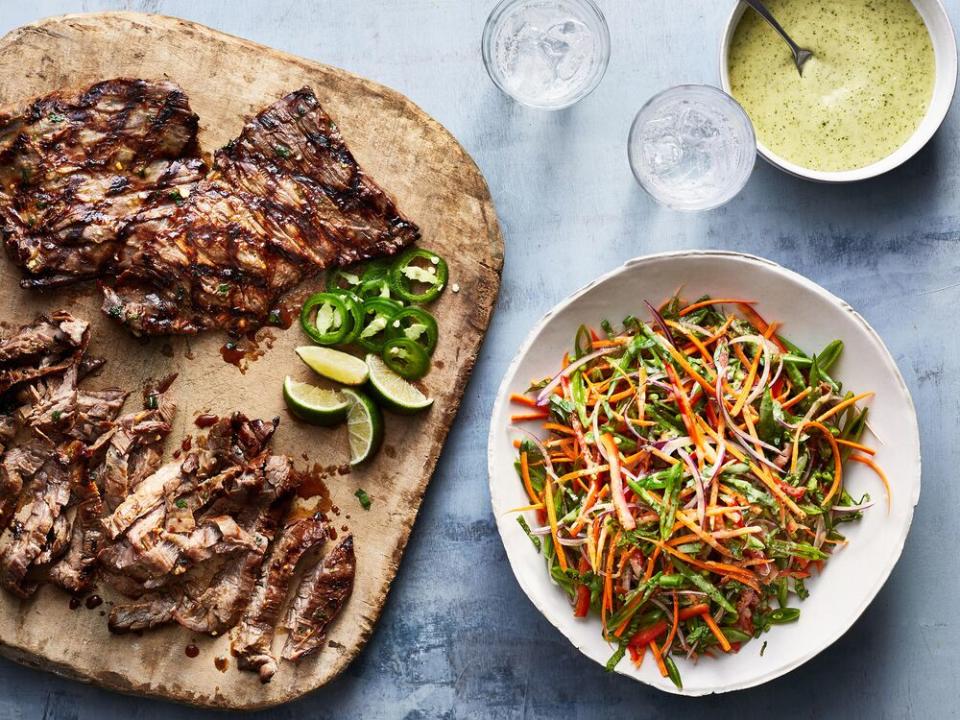
Step Two: Prepare Your Steaks
Get the Recipes: Do-It-All Marinade, Citrus-Marinated Skirt Steak, Bulgogi Flank Steak, Steakhouse-Style Marinade, Northwest Grilled Flank Steak, Chipotle Flank Steak with Wheat Berries, Orange-Soy Skirt Steaks, Carne Asada Marinade, Garlic Flank Steak, Vietnamese Steak and Sugar-Snap Salad
Now that you’ve bought your steaks, it’s time to prepare them for cooking. First, some chefs may choose to tenderize their steaks. This is a process any steak can benefit from, but lean or cheap steaks especially should go through some form of tenderization.
One method of tenderization is simply to beat the steak with a mallet or meat tenderizer. To keep that process from getting too messy, you can wrap your steaks in plastic wrap before taking a whack at them. However, you could also break down the tough muscle fibers in your steak by creating a marinade, especially one containing vinegar or citric acid. This method also provides the bonus of imparting quite a bit of flavor into your final meal. Finally, you could simply cover your steaks in kosher or sea salt and wait for the mineral to do the tenderizing for you. (Don’t worry; you rinse off the salt before cooking.)
If you use a marinade or a salt rub to break down your steaks, then make sure to pat them dry with paper towels before putting them in the pan. Extra moisture will work against you if you want a crust on your steak (and you do). You can always add a spice rub of your choice to your steaks after you pat them dry and before you start cooking them.
In instances where you’re not planning to sit down to a steak dinner any time soon, feel free to freeze your cuts to keep them as fresh as possible. Pre-wrapped steaks can be stored in the freezer for up to a month as-is, or for six to twelve months if additional freezer-proof material, like heavy duty foil or freezer bags, are used. If removed from their original packaging, steaks should be frozen quickly on a baking sheet in a single layer, and then wrapped properly in individual portions to prevent freezer burn. For more tips on freezing and thawing meat, refer to our guide to freezing and thawing every kind of meat.
Cooks who plan to use their steaks in stir-fries or other dishes where bite-sized portions are called for may find it easier to cut uncooked steak if it is still partially frozen. As with cooked steak, make sure to cut against the grain. The grain refers to the direction the fibers of the meat are running. In some cuts, the grain changes occasionally, so you may have to change your cutting direction accordingly. Still, the work is worth it for more tender bites.
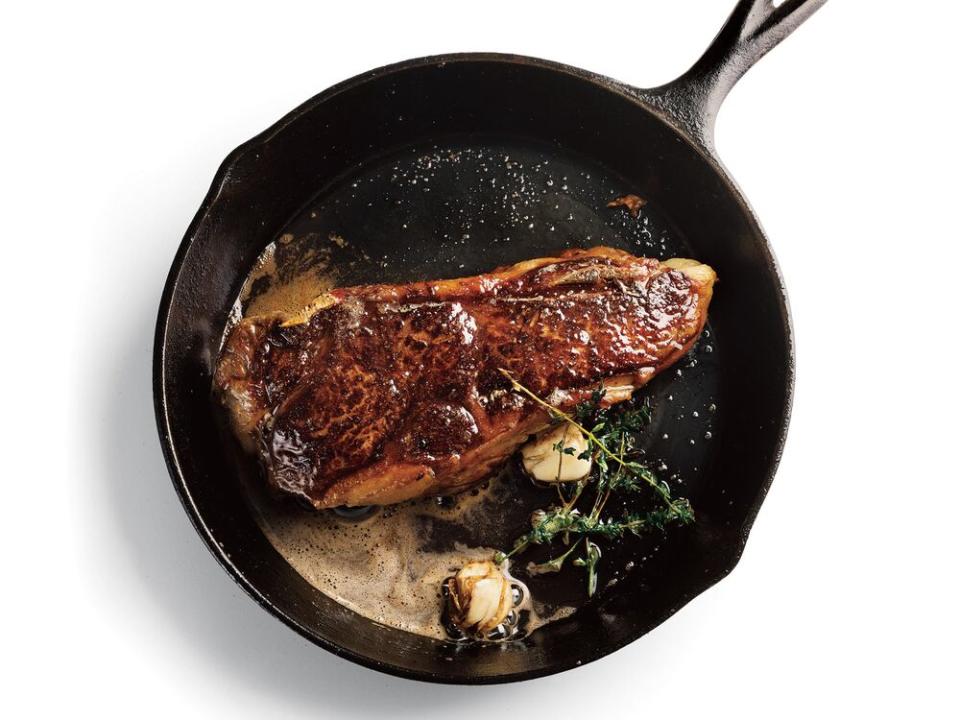
Step Three: Choose Your Cooking Method
Now that you’ve selected your steak and tenderized it as necessary, it’s time to decide how you’d like to cook it. Grilling or searing in a cast-iron skillet are the two most common methods, but there are a few additional methods you might try as well.
If you choose grill or pan-searing, it’s important to keep a few rules of thumb in mind. First, temperature is an important factor even before your steak hits the pan. If it comes straight out of the fridge, make sure to flip the steak often (or temper it) to prevent a burnt outside and cool center. A room temperature steak, on the other hand, can generally be left on one of its sides for two-thirds of the cooking time before it’s flipped. That’ll leave a better crust while still ensuring even cooking. For more steak-cooking tips, like why you should avoid super high heat, check out this list of pro-tips.
Most importantly, make sure that you remember that steak doesn’t stop cooking once you’ve taken it off the heat. You need to let it rest for a bit so that it can retain both internal heat and its flavorful juices; dig in too soon, and you’ll lose every bit of moisture you seared in. If you’re feeling antsy, take 10 or 15 minutes to put a salad together before slicing and plating the steak to serve.
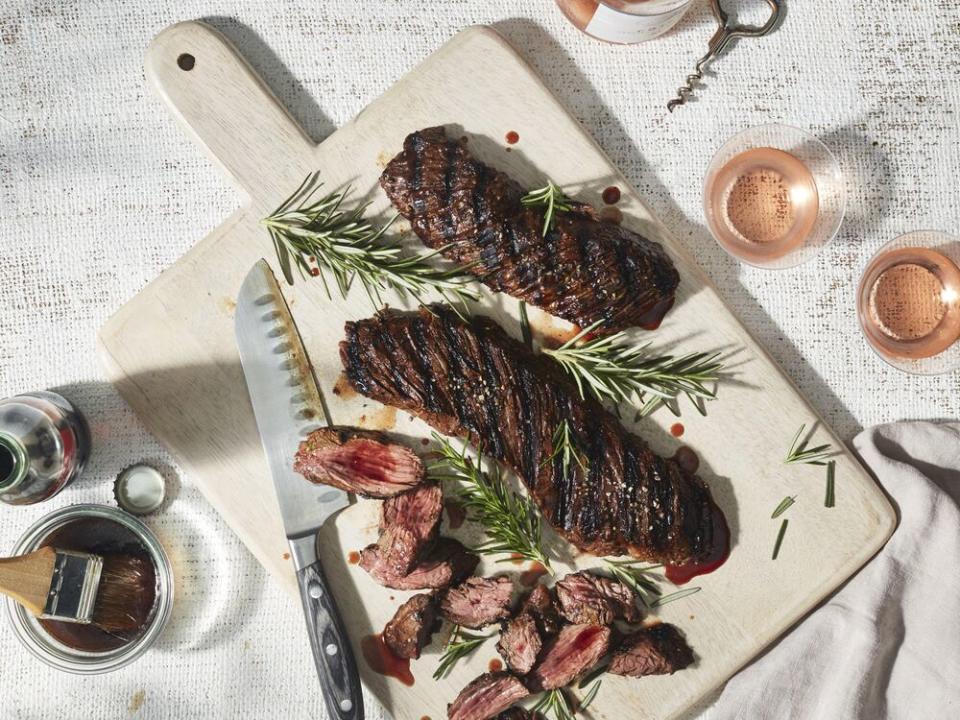
How To Make Steaks On the Grill
Get the Recipes: Basic Grilled Steak, Cola-Marinated Hanger Steak, Asian Grilled Steak, Spicy Grilled Steak
Grilling steak is best done simply, with wood or charcoal grills if possible. Gas grills will still do the trick, however. Make sure to only leave the steak cooking for a few minutes on each side, and leave the steaks out for a good half hour before you put them on the grill; that will ensure the steak develops a good bit of outer char to go along with the smoky flavor.
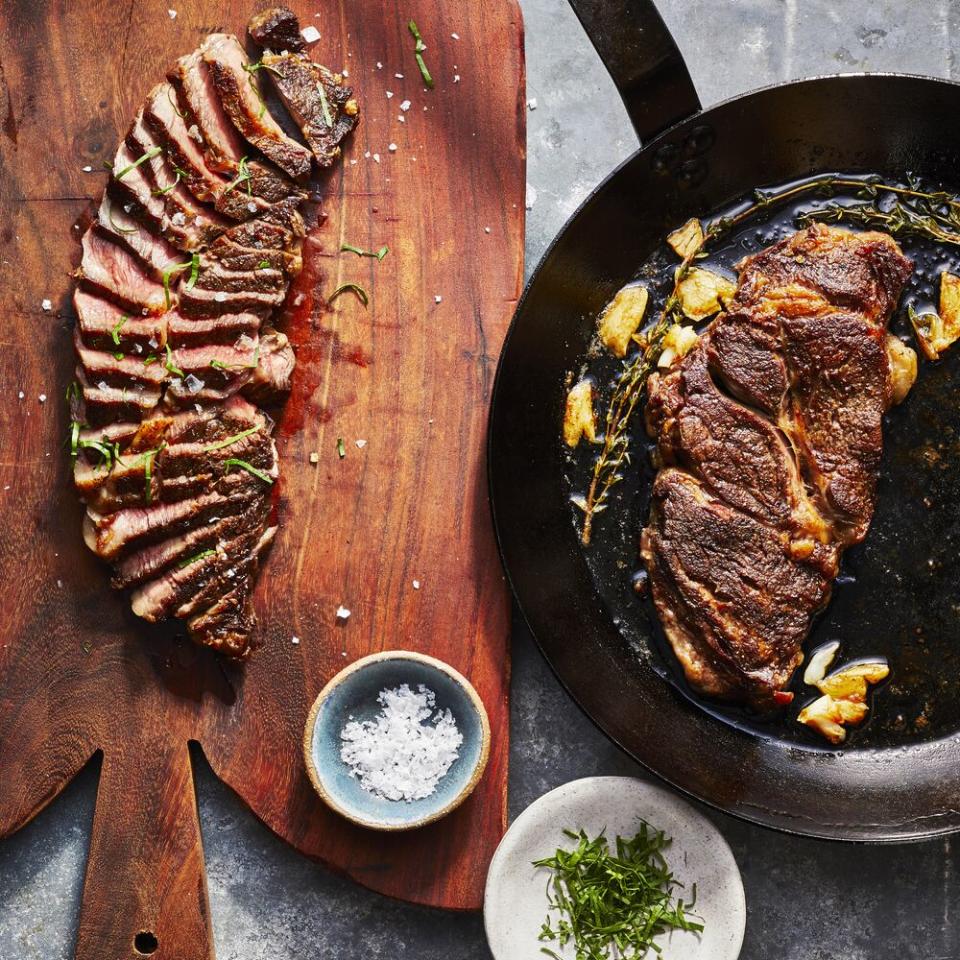
How to Make Steaks In a Cast-Iron
Get the Recipes: Pan-Seared Strip Steak, Steak Diane, Pan-Seared Strip Steak with Mushrooms, Asparagus, and Vanilla Cabernet Butter, Pan Seared Chuck-Eye Steaks
If you don’t feel like firing up the grill, or simply don’t have access to one, then a well-seasoned cast-iron pan is your best bet. For this method, remember to use the frequent flipping method for cold steaks and to use the same technique applied to grilled steaks for cuts of meat that have come to room temperature. Once again, the steaks will only need two or three minutes per side to get to medium-rare or medium; loosely covering the steaks with foil when they’re out of the pan can encourage continued cooking during the resting process.
Cooking steak on the stove top makes it easy to add in extra butter or herbs, so if you want to baste the meat during its cooking time (highly encouraged—especially for leaner cuts), this application may be the best fit for you.
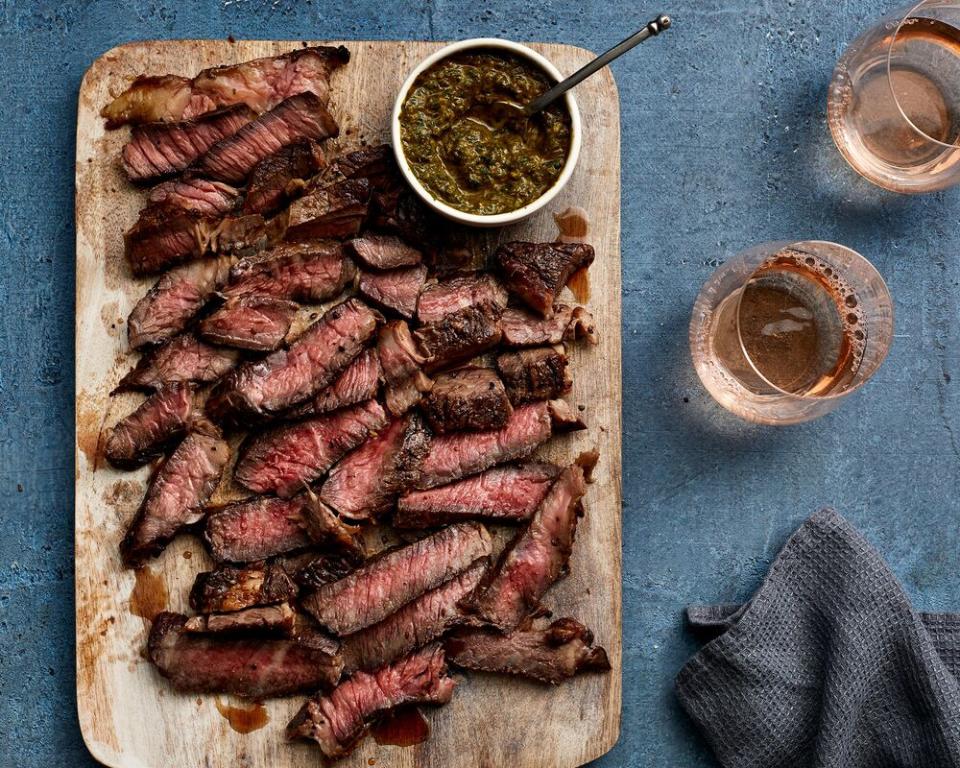
How to Make Steaks In the Oven
Get the Recipes: Broiled Steaks with Mushrooms, Foolproof Chuck Steak with Smoky Chimichurri
You may initially shy from a steak made in the oven, but we promise your oven is an excellent tool for cooking a delicious steak dinner, particularly when working with cuts of beef that might become dry if handled incorrectly. Instead of using your usual oven function, you can broil your steaks for a few minutes on each side to achieve a decent sear. This method works best if you have a meat thermometer handy, since it’s harder to check on the steaks without losing heat, so keep that in mind. Alternatively, a reverse sear (which is demonstrated in the chuck steak recipe above) is a great trick for achieving a perfectly cooked steak every time.
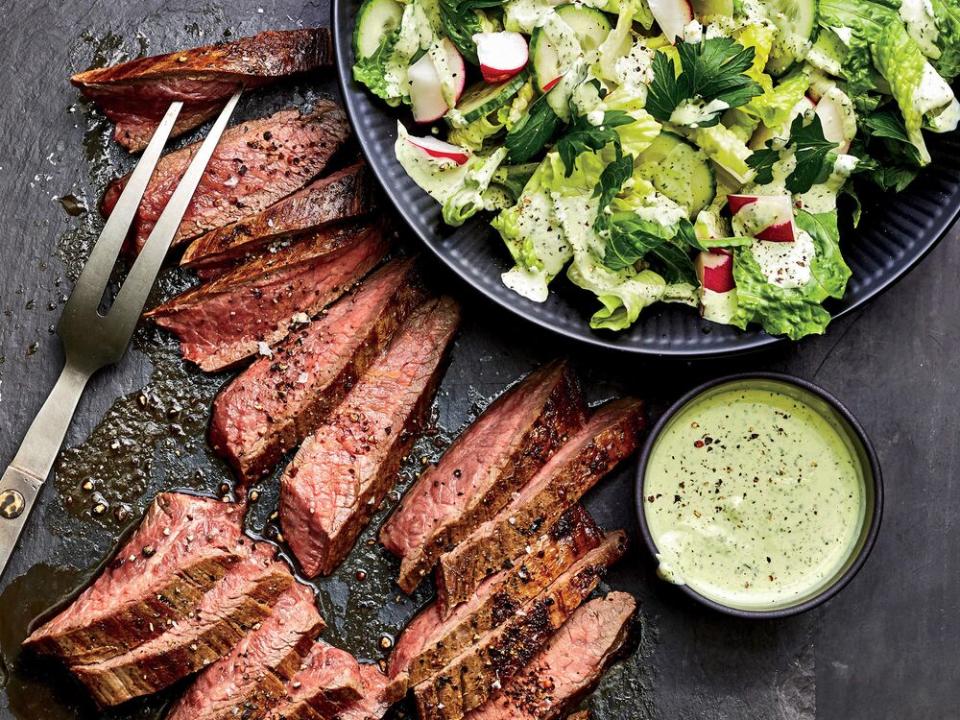
How to Braise Steaks
Get the Recipes: Guinness-Braised Chuck Steaks, Braised Flank Steak with Nasturtium Leaves and Green Olives
To braise your steaks, flash cook them on both sides in a pan to get a good sear, and then place your steaks in a large pot or Dutch oven with a braising liquid, such as a sauce made up of sherry, beef stock and roasted vegetables. Cover the dish and allow the meat and sauce to gently simmer in the liquid for two to three hours, or until tender.

How to Make Fried Steak
Get the Recipes: Chicken-Fried Steak, Country Fried Steak with Mushroom Gravy, Chicken-Fried Steak with Redeye Curry Gravy, Chicken Fried Steak with Milk Gravy
A Southern classic, country-fried or chicken-fried steak is often made with cube steak or some other inexpensive cut of beef. To make it, simply take a few dry cube steaks, dredge them in flour, egg wash and breading, and then fry them up as you might a piece of fried chicken. Flip after a few minutes to ensure the coating becomes evenly golden on both sides. Serve with country gravy or, if you’re feeling brown gravy, make a sauce with sauteed mushrooms instead.
Additional Steak Tips
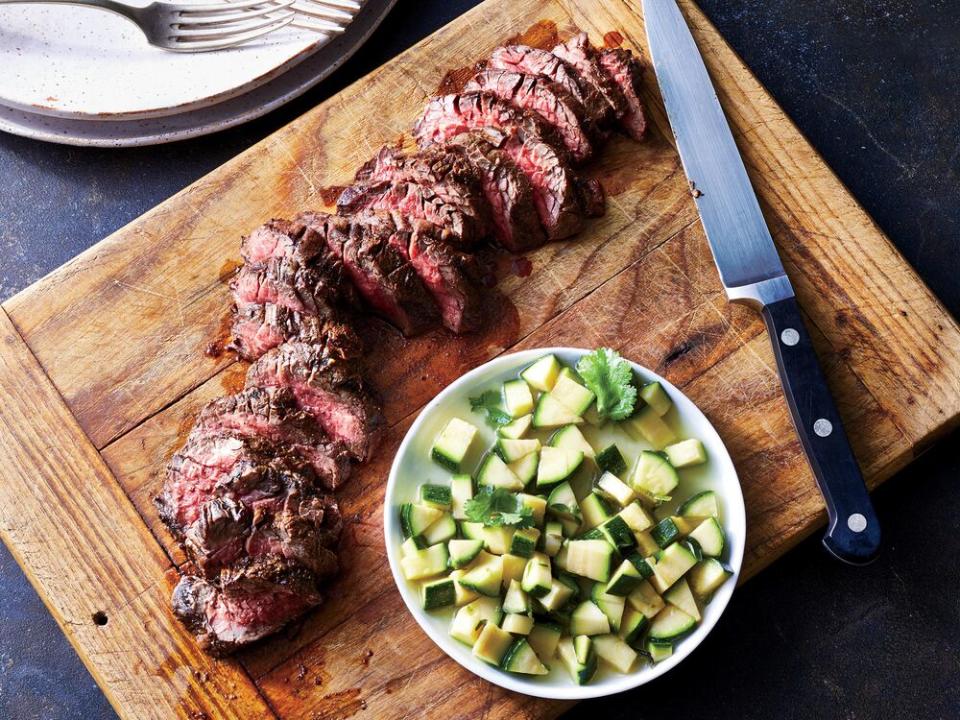
How to Determine When Your Steak is Done
Ideally, you’ve kept a meat thermometer on hand during the cooking process so you can figure out whether your steak is done (and if you have, you can use the chart on this page to figure out what temp your steak should be). But if you don’t have a meat thermometer on hand, you can always use the tried-and-true method of comparing the meat’s give to the palm of your hand. For this hack, feel the fleshy part of your hand right below your thumb when your palm is totally relaxed; that’s roughly the give of a raw steak. Now press your thumb and pinky together and feel that same area of your palm again; that’s a steak cooked the texture of shoe leather. For medium through rare steaks, your ring, middle and index fingers will provide the right tension. Make sure to poke the steak with tongs or some other utensil when comparing, however; no need to burn your fingers.
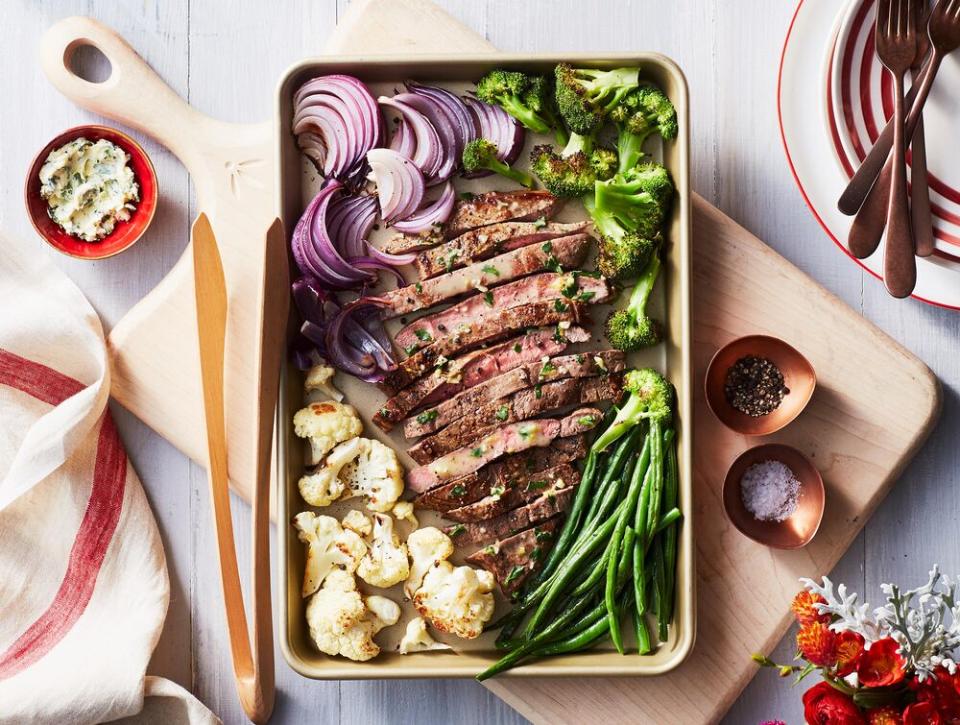
How to Reheat Steak Without Zapping Its Flavor
We get it—many of you would rather eat leftover steak cold than to risk turning it into tough, indigestible bits of beef by reheating it. But hear us out, because there are a couple of methods for reheating your steak that won’t render it a dry, lifeless entree. Gradually warming up the steak in the oven or microwaving it on a lower setting, in our experiments, have yielded the best results. Read more in our guide to The Best Ways to Reheat Steak.
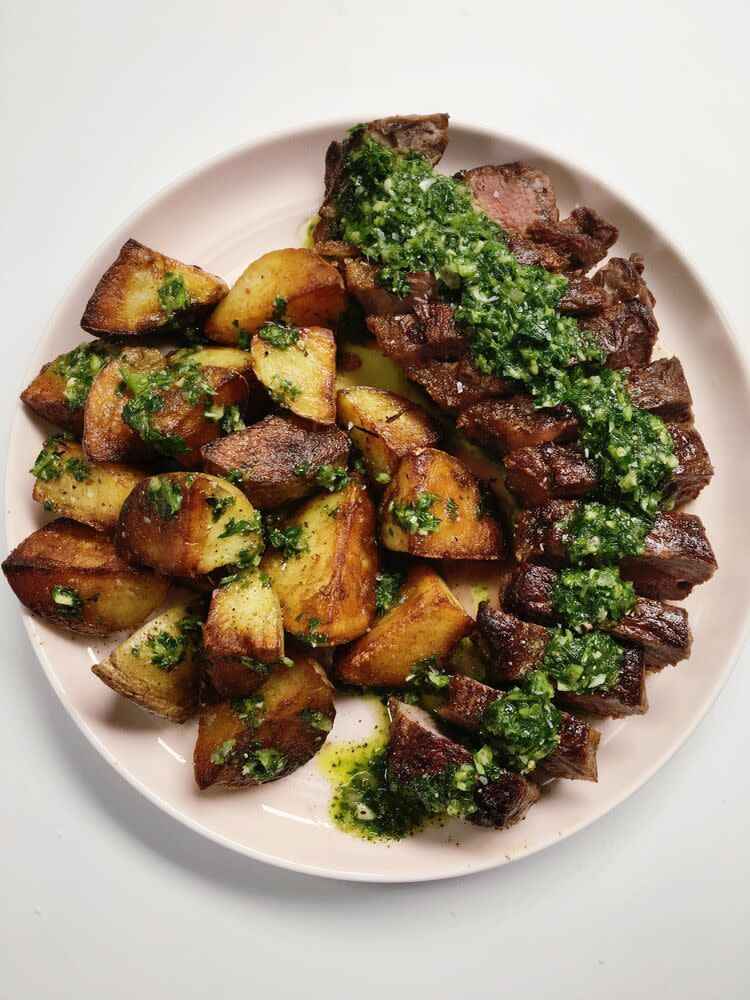
How to Garnish Your Steak
Get the Recipes: Chimichurri Sauce, Tangy Flank Steak with Horseradish Sauce, Seared Flank Steak with Lime-Wasabi Sauce, Flank Steak with Corn Tomato Relish
Cooked properly, your steak should be delicious as is—but where’s the fun in that? If you want to dress things up a bit, consider pairing your steak with an optional sauce, like chimichurri or horseradish, so that your family can decide what goes best with their meal. Relishes are also a great way to complement a delicious steak, and fans of blue cheese, mushrooms or caramelized onions can always load their steaks with any or all of those options. And of course, if you’re wanting to keep things basic, you can always just keep a bit of sea salt nearby to sprinkle on each bite.

